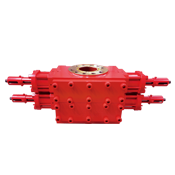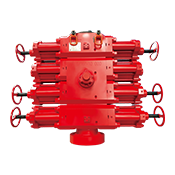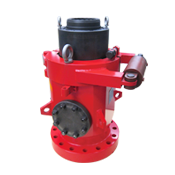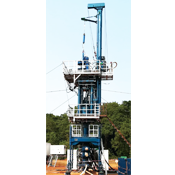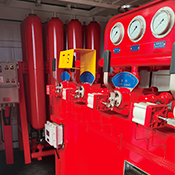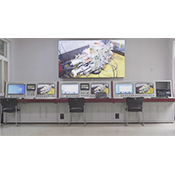How to Choose the Right Cable Blowout Preventer OEM for Your Project
2025-06-04
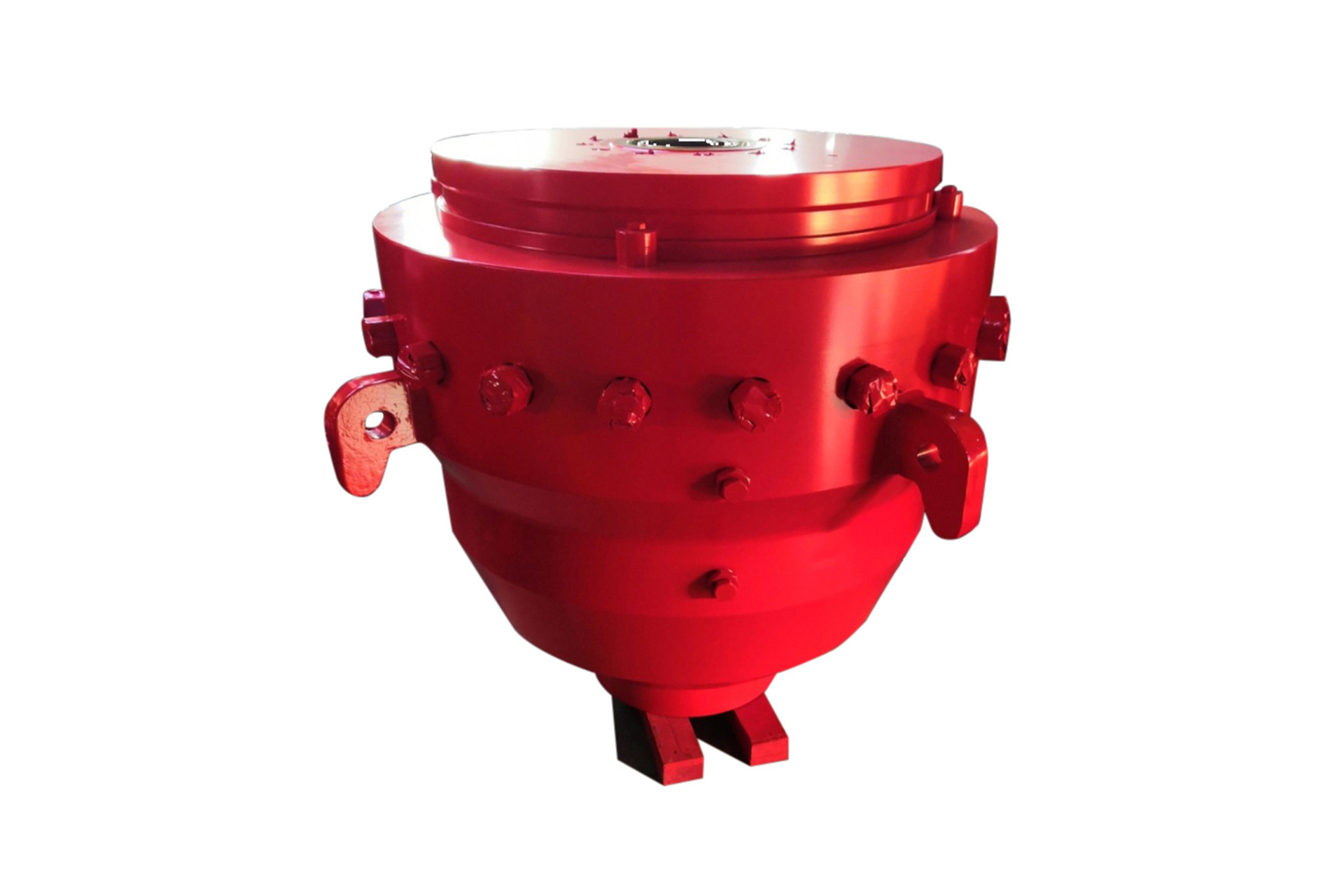
How to Choose the Right Cable Blowout Preventer OEM for Your Project
Selecting the right Cable Blowout Preventer (CBOP) OEM for your project is crucial for ensuring safety, efficiency, and regulatory compliance in drilling operations. A well-chosen OEM can significantly impact the success of your project, from preventing blowouts to optimizing operational performance. This guide is designed to help you navigate the selection process, offering in-depth analysis and practical tips to make informed decisions.
Understanding Cable Blowout Preventers
Before diving into the selection process, it’s essential to understand what a Cable Blowout Preventer is and its role in drilling operations. CBOPs are safety devices designed to seal wellbores against uncontrolled fluid and gas release. They are critical in preventing blowouts that can lead to catastrophic accidents, environmental damage, and significant financial loss.
Importance of Choosing the Right OEM
The OEM you choose directly influences the CBOP's reliability, safety features, and compatibility with your drilling system. A reputable OEM will provide high-quality products tailored to your specific needs and well conditions. Poor selection can result in equipment failure, increased downtime, and non-compliance with safety regulations.
Key Factors to Consider When Choosing a CBOP OEM
When selecting a Cable Blowout Preventer OEM, several critical factors must be taken into account:
1. Industry Reputation
Research the OEM's reputation within the industry. Look for reviews, testimonials, and case studies. A well-regarded OEM typically has a history of reliability and successful partnerships with other companies in your field.
2. Product Quality and Standards
Ensure the CBOPs meet industry standards and certifications. High-quality materials and manufacturing processes are crucial for ensuring the longevity and effectiveness of the product. Check if the OEM adheres to ISO certifications and other relevant industry benchmarks.
3. Technical Support and Customer Service
Evaluate the level of technical support the OEM offers. A responsive customer service team is invaluable for troubleshooting and ensuring that your CBOP operates efficiently. Good OEMs often provide training and ongoing support to help you maximize the device's capabilities.
4. Customization Options
Each drilling project may present unique challenges, and having a CBOP that can be customized to fit specific operational needs is essential. Discuss your requirements with the OEM to see how they can tailor their products to meet your project specifications.
5. Warranty and Maintenance Services
Inquire about the warranty options and maintenance services provided by the OEM. A comprehensive warranty indicates the OEM's confidence in their product. Additionally, ongoing maintenance services can help prolong the lifespan of your CBOP and reduce operational risks.
Process of Evaluating Potential CBOP OEMs
To ensure a thorough evaluation, follow these steps:
1. Compile a List of Potential OEMs
Start by compiling a list of potential OEMs. Utilize industry networks, online forums, and trade shows to discover manufacturers that specialize in CBOPs.
2. Perform Background Checks
Conduct background checks on each OEM. Investigate their history, market presence, and any past issues related to product quality or safety.
3. Compare Product Offerings
Make detailed comparisons of the products available from each OEM. Look at specifications, features, and design innovations. Pay attention to the adaptability of their products for various drilling conditions.
4. Request Quotes and Proposals
Contact the shortlisted OEMs to request quotes and proposals. This step will help you understand pricing structures and the services included.
5. Visit Facilities if Possible
If feasible, visit the production facilities of the OEMs you are considering. This visit can provide insight into their manufacturing processes, quality control measures, and operational standards.
Assessing the Financial Stability of the OEM
Before making a final decision, it’s essential to evaluate the financial stability of the OEM. An OEM that is financially stable is more likely to fulfill warranties, provide parts, and continue offering support in the future.
1. Analyze Financial Reports
Request or research the financial reports of the OEM. Look for signs of stability such as consistent revenue growth, manageable levels of debt, and positive cash flow.
2. Check for Industry Partnerships
OEMs with strong partnerships in the industry often have better resources and support networks. These partnerships can enhance the reliability of the OEM’s products and services.
3. Review Longevity in the Market
Consider how long the OEM has been in the market. Established companies tend to offer more dependable products and have a wealth of experience in the industry.
Regulatory Compliance and Safety Standards
Compliance with local and international regulations is non-negotiable in oil and gas operations. The selected OEM must adhere to relevant safety standards.
1. Understand Compliance Requirements
Familiarize yourself with the safety regulations applicable to your project. Regulations may vary by region and type of drilling operation.
2. Verify OEM Compliance
Ask the OEM for documentation proving compliance with relevant safety standards. This documentation can include certificates, test reports, and safety audits.
Evaluating Client Testimonials and Case Studies
Real-world experiences from other clients can provide invaluable insights into the OEM.
1. Reach Out for References
Request references from the OEM and reach out to past clients. Ask about their experiences, including product reliability, customer service, and overall satisfaction.
2. Analyze Case Studies
Review case studies published by the OEM. These documents often highlight the OEM's problem-solving capabilities and the effectiveness of their products in real-world scenarios.
Working with the OEM During the Selection Process
Engaging with the OEM throughout the selection process can yield beneficial insights and foster a collaborative relationship.
1. Open Communication
Maintain open lines of communication with the OEM. Discuss your project requirements, timelines, and any concerns you may have.
2. Inquire About Training and Support
Ask about the training and support options available. Proper training ensures your team can effectively use the CBOP, maximizing safety and efficiency.
3. Negotiate Terms and Conditions
Don’t hesitate to negotiate terms, including pricing, delivery schedules, and support services. A good OEM will be willing to work with you to meet your project needs.
Final Thoughts on Selecting the Right OEM
Choosing the right Cable Blowout Preventer OEM is a critical decision that impacts the safety and success of your project. By considering factors such as reputation, product quality, support services, customization options, and compliance standards, you can make an informed decision that aligns with your operational objectives.
FAQs
1. What is a Cable Blowout Preventer?
A Cable Blowout Preventer is a safety device used in drilling operations to prevent uncontrolled release of fluids and gases from a well.
2. How do I know if an OEM is reputable?
Research the OEM’s history, client testimonials, and industry reputation. Look for certifications and compliance with industry standards.
3. What should I consider in terms of warranty?
Evaluate the warranty terms offered by the OEM, including coverage, duration, and any maintenance services included.
4. Can I customize a Cable Blowout Preventer?
Many OEMs offer customization options to tailor CBOPs to specific project requirements and drilling conditions.
5. Why is regulatory compliance important?
Regulatory compliance ensures that your operations meet safety standards, reducing the risk of accidents and legal issues.
Conclusion
Selecting the right Cable Blowout Preventer OEM is an essential part of ensuring safety and efficiency in drilling operations. By taking the time to evaluate potential OEMs based on reputation, product quality, customer support, and compliance with safety standards, you can make a decision that not only meets your project needs but also enhances operational success. As you embark on this process, remember that thorough research and open communication with your chosen OEM will pave the way for a successful partnership.
Related News
Contact Us
Mailbox:
tiehu@tiehupetro.com
Telephone:
86-317-2616808
Address:
Yanling Industrial Zone, Renqiu City, Cangzhou City, Hebei Province, China


